-
Earth Science Journal!
Title: Energy Transfer!
Thermal Conductivity
Our previous lesson taught us that an object's specific heat determines how quickly different materials transfer energy.
Conduction: Transfer of heat energy by "touch".
When air touches land or water, it warms up or cools down as it hovers over it.
For example, imagine putting your hands on a freshly poured hot coffee mug.
Watch the following video and make some predictions.
Reminder: Take good notes about the questions in the videos.
1. Which object will feel warmer, the book or the hard drive?
2. How do their temperatures compare?
3. On which block did the ice melt faster (aluminum or plastic blocks)?
4. Which material has a higher specific heat (aluminum or plastic)?
5. Heat source or sink?
Copy down these definitions in your journal.- Heat source: the object that has the greater temperature (amount of kinetic energy)
- Heat sink: any place that is heated by the heat source. Where the energy flows.
So, on a cold day, you hold a nice hot cup of cocoa in your hands.
What is the heat sink and heat source in this hot cocoa example?Heat Source = The hot cocoa
Heat Sinks = Your hands, the air, the cup, or any surface the cup sets on.
6. Which is hotter, the cake pan or the cake? Explain.
7. Why does the metal feel colder or hotter, depending on the situation?
The answers are in the video above.
Electromagnetic Radiation: Transfer of energy by electromagnetic waves
- Travels through outer space
- Earth absorbs more insolation during the day.
- Earth radiates more infrared waves (heat) into space at night.
- Dark-colored objects absorb and radiate energy faster than lighter-colored objects.
- Rough objects absorb (heat up) and radiate (cool down) energy FASTER.
- Whatever heats up (absorbs) faster also cools down (radiates) faster.

8. Which forms of radiation are harmful and which are not harmful?
Where does color come from?
Click on the link above for an important introduction to color!
Watch this video as well.
9. Where does color come from?
Where does color come from?
- Color comes from the light source.
- White light contains all visible colors.
- The wavelengths of colors reflected by the object in that light are why we see that object in a particular color.
- The wavelengths absorbed are not seen.
- Black will absorb all the colors, while white reflects all the colors.

This is simply a poster board with the colors written in marker and set out in the sunlight.
10. Which color will heat the least in the sunlight?
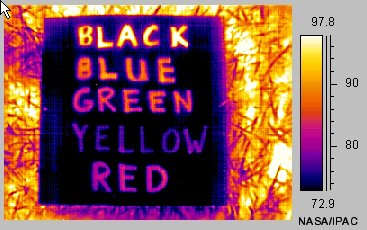
Did you choose the white poster board?As you can see in the infrared, the black color heated up the most, and the yellow color heated the least of the colors written on the board. However, the white poster board heated up the least because all the rainbow colors hidden in white light were reflected off it and not absorbed.
View a radiometer in action!
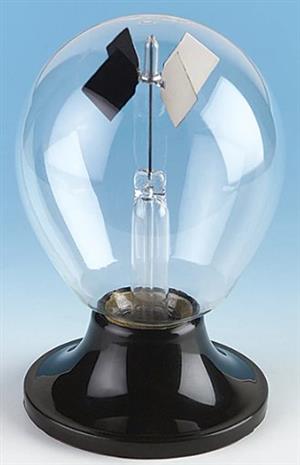
A radiometer is a very simple instrument. There are fins painted black on one side and white on the other. They are free to spin in a vacuum chamber. There is no air in the glass bulb so that no convection currents can spin the fins. Why do you think it spins?
Do you think you could get the radiometer to spin counterclockwise?
11. How did we get it to spin backward in class? Why did that work?
Important!
Write the following in your journal.Dark objects both absorb (heat up) and radiate (cool down) energy faster.
Rough objects both absorb (heat up) and radiate (cool down) energy FASTER.
Whatever heats up (absorbs) faster also cools down (radiates) faster.
Putting this all together! The Sun’s rays make it to the Earth (radiation). That insolation adds energy to the Earth’s surface, making the molecules shake faster. Those molecules hit the ones they touch, transferring energy through the surface by conduction.
If the sun’s radiation hits the water, it heats up (and shakes up) the water, making convection currents move in the ocean. If the radiation hits the land, it heats the land and conducts heat to the air molecules that touch the land. Those air molecules become less dense and rise, creating convection currents in the atmosphere that we call wind.
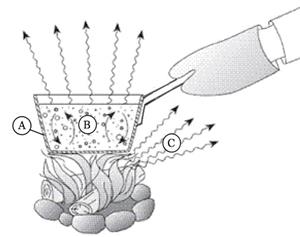
12. What letter above represents conduction A, radiation C, and convection B?
13. What color radiates heat the fastest (black or white)? Black
14. What color absorbs heat the fastest (black or white)? Black
15. What texture absorbs heat the fastest (rough or smooth)? Rough
16. What texture radiates heat the fastest (rough or smooth)? Rough
17. Which material will heat up faster, copper or iron? Copper
18. What color and texture would make the best solar reflector? White/Smooth
19. Draw the direction of the water flow in the beaker.
20. Which of the scenes below will absorb the most insolation? Forest
21. Which of the scenes below will reflect the most insolation? Snow
This is El Niño!
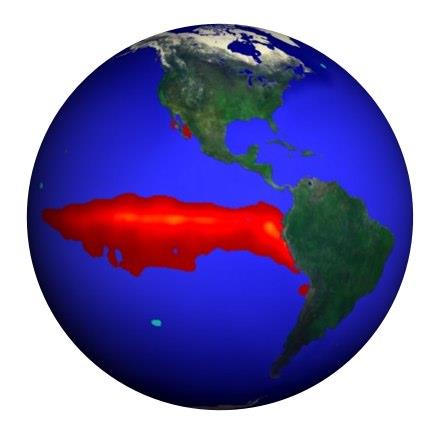
What do you think it is?
Watch the next few videos.
Take some notes in your journal.
Regents Exam Questions Follow.
Reference Tables (page 14)
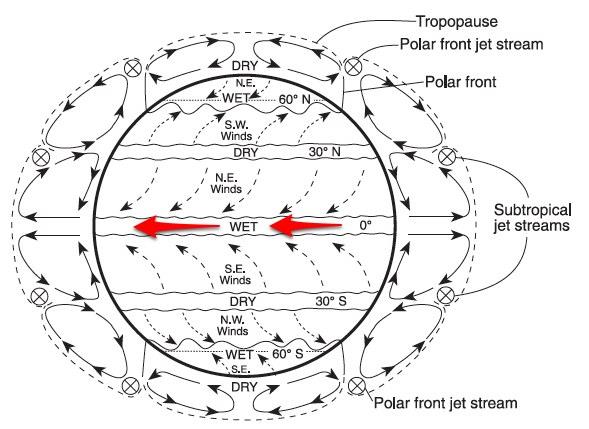
The Earth’s prevailing winds blow the surface ocean currents.
The Trade Winds tend to blow the Equatorial Current winds West.
The warm water rushes back East when the Trade Winds are not as strong!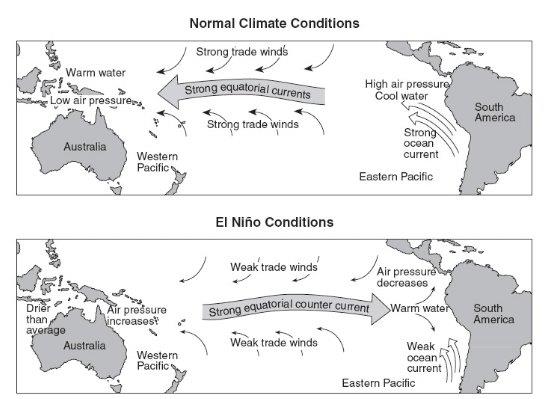
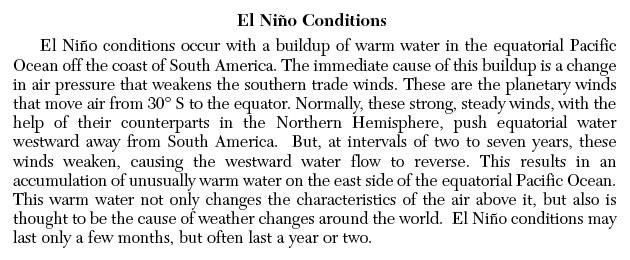
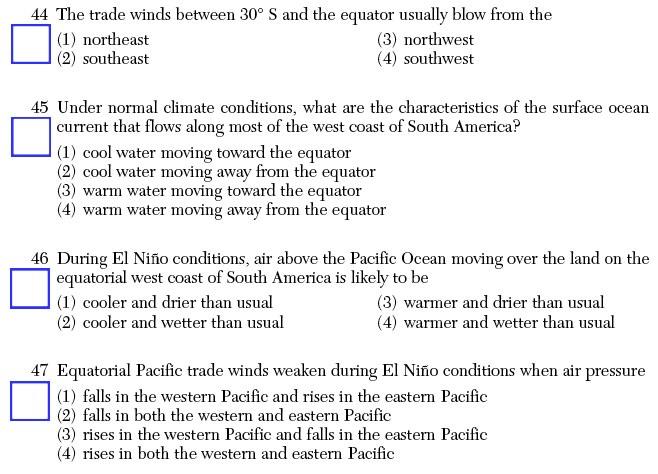
January 2015 Regents QuestionsBase your answers to questions 1 through 4 on the passage and cross-section below and on your knowledge of Earth science. The cross-section represents a generalized region of the Pacific Ocean along the equator during normal (non-El Niño) conditions. The relative temperatures of the ocean water and the prevailing wind direction are indicated.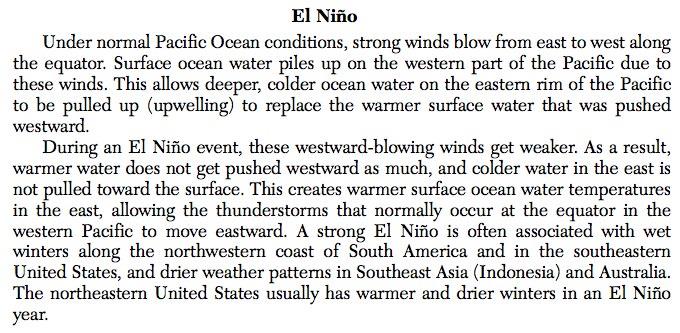
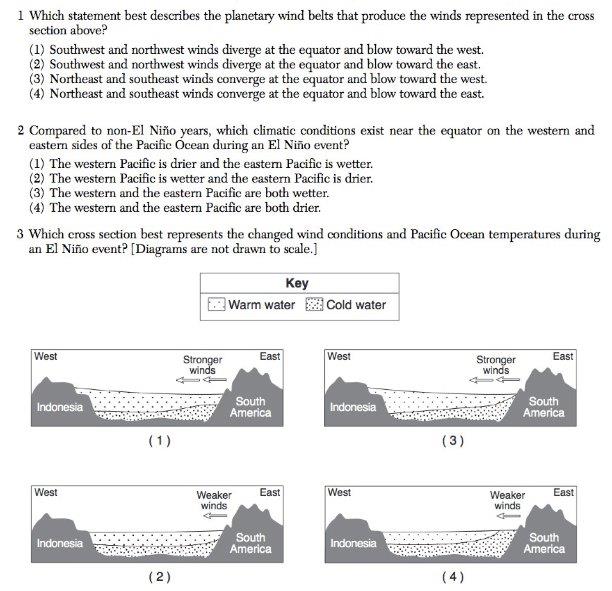
Check your answers below.
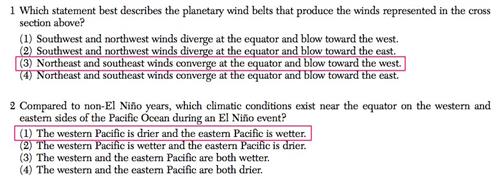


ReflectionsExplain the difference between conduction, radiation, and convection and how a material's color and specific heat can affect energy transfer.Describe the difference between El Niño and La Niña.How are the three forms of energy transfer shown El Niño?
BonusCreate your own video demonstration of El Nino/La Nina using a fish tank, colored water, oil, and a hair dryer. Here is an example.
https://www.youtube.com/watch?v=PdMqgfAXm2w&t=3s

